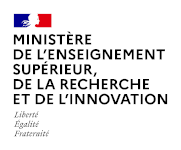NeXML
NeXML is an exchange standard for representing phyloinformatic data — inspired by the commonly used NEXUS format, but more robust and easier to process.
The NEXUS flat file format is a commonly used syntax for phylogenetic data. Unfortunately, over time, non-compliant NEXUS implementations have overloaded the standard – which has caused various problems. Meanwhile, mature technologies around the XML standard have emerged. These technologies have the potential to greatly simplify and improve robustness in the processing of rich phylogenetic data. This website is the home for the community-driven NeXML project, which seeks to leverage XML technologies in the development of a data standard that translates NEXUS concepts into a syntax that is more easily validated and processed. This approach promises several advantages:
– Syntax validation — some of the issues hampering interoperability are caused by the fact that no formal specification exists for NEXUS and other flat files, and no unambiguous way to validate them. Using XML Schema we have defined a versioned grammar against which data files can be validated syntactically. In addition, this website has a validation service (the orange box in the center of every page) that also checks the semantics of uploaded NeXML files beyond ways that can be expressed in XSD schema language.
– Semantic annotation — an issue in current file formats is that their semantics are not well-defined. For example, what does it mean to use an ambiguity code in a matrix? Is it uncertainty or polymorphism? With the wider EvoInfo working group we are developing an ontology on which we are mapping NeXML schema types so that the semantics of data files become well-defined. In addition, NeXML has a facility for annotating fundamental phylogenetic data objects (such as trees, character state matrices and taxa) with ontology predicates and objects using RDFa.
– Web services — a number of different technologies (such as XML-RPC, REST and SOAP) have emerged allowing disparate, xml-based services to be glued together over the internet. For example, the PhyloWS initiative seeks to develop conventions for RESTful phylogenetic web services for which NeXML is one of the preferred response formats.
…






